Taekwondo Uniforms - V-Neck Tae Kwon Do Gi & TKD Dobok
-
From $49.95
The taekwondo uniform, also called a dobok, has its roots in traditional Korean martial arts. It didn't always look the way it does today. In the early days of modern taekwondo, most practitioners wore uniforms that closely resembled the Japanese karate gi. These featured wrap-around jackets with open fronts and belts to hold everything in place. Over time, taekwondo began to distinguish itself, not just in terms of technique, but also through its uniform. That's when the v-neck gi became standard for many taekwondo styles, especially those affiliated with the World Taekwondo (WT) federation.
Why the change in design? The v-neck jacket, unlike the traditional karate gi, doesn't need to be tied across the chest. That means less hassle during training and more freedom to move. If you've ever had your wrap-around gi come undone mid-sparring or during a high kick, you'll appreciate how the closed v-neck style stays put. It's all about functionality, especially in a martial art like taekwondo that emphasizes fast, high kicks and explosive motion.
Another big difference between a taekwondo dobok and a standard karate gi is the material. A typical taekwondo gi is made from lightweight fabric, usually a cotton and polyester blend. This allows for better breathability and a greater range of motion. Karate gis, by comparison, tend to be thicker and more rigid to withstand the pulling and grabbing common in that art. For taekwondo, the uniform should feel light and flexible, giving you the ability to move freely and comfortably through forms, drills, or sparring sessions.
Taekwondo itself is a relatively modern martial art that was officially established in Korea during the 1950s. It combines elements of older Korean styles like Taekkyeon and Subak, with some influences from Japanese karate. What sets taekwondo apart is its focus on kicking techniques, fast footwork, and dynamic motion. Today, most practitioners belong to either World Taekwondo (WT) or the International Taekwon-Do Federation (ITF). WT practitioners usually wear the classic v-neck gi, while ITF styles often stick with the older wrap-around jacket design. Both are still considered doboks, but the cut and style can differ significantly depending on your organization.
No matter which taekwondo path you're on, we've got something that fits. KarateMart.com offers a full range of tae kwon do uniforms, from entry-level student doboks to competition-ready gear. We stock both traditional crossover jackets and modern v-neck styles, so you can find what works best for your school and training style. We even carry plus-size options, because martial arts should be for everyone, regardless of body type or experience level.
One thing we've learned over the years is that TKD students can be very particular about their uniforms, and for good reason. If your taekwondo uniform doesn't fit right or isn't made to handle the demands of training, it can seriously affect your performance. That's why we only offer doboks that are designed to meet the high standards of today's athletes. Whether you're working through your first white belt form or preparing for your black belt test, your tkd dobok needs to keep up.
When you're choosing a taekwondo gi, there are a few things to consider. First, ask your instructor if your school has any specific requirements. Some WT schools require students to wear a white v-neck gi, while black belts might be asked to wear a dobok with black trim around the collar. ITF schools often include school patches, crests, or logos on their uniforms. Whatever your school needs, you'll find something here that fits both the rules and your personal style.
Sizing can also vary from brand to brand, but our product descriptions and sizing guides make it easy to choose the right fit. Doboks are typically numbered by height, and we offer everything from kids' sizes to adult plus sizes. The uniform should be loose enough to allow free movement, but not so baggy that it gets in your way. If you're unsure what size to go with, our team is always here to help.
The fabric weight of your taekwondo uniform is another important factor. Lightweight doboks are ideal for students, casual training, or hot climates, while super middleweight or heavier tkd uniforms are better for sparring, tournaments, or high-impact training. Heavier doboks tend to be more durable and have a crisp "snap" sound when executing techniques, which many advanced students love.
It's worth mentioning that while taekwondo uniforms are primarily associated with taekwondo, other Korean martial arts use similar doboks. Hapkido and Tang Soo Do also use uniforms that look very much like the tae kwon do gi, sometimes with small variations in cut, collar color, or patches. But if you're looking for the classic taekwondo dobok, especially the v-neck variety, you've come to the right place.
At KarateMart.com, we've been outfitting martial artists for years, and we understand what you're looking for. Our taekwondo doboks are built to last, easy to move in, and comfortable enough to wear through hours of training. If you need something that stands up to repeated washing, intense workouts, and regular use, you're in the right place.
Browse our full selection of tkd uniforms today and find the perfect fit for your martial arts journey. From basic student sets to advanced competition-ready taekwondo gis, we've got options for every skill level and budget. Get ready to train with confidence, knowing you've got the right gear from the start.
What is the difference between a Dobok and a Gi?
If you're new to martial arts or shopping for a uniform for the first time, it's easy to get confused by the terms "dobok" and "gi." While they might look somewhat similar at first glance, they're not the same thing. The difference between a dobok and a gi comes down to the martial art they're used for, their design, their function, and even the philosophy behind them.
Let's start with the basics. The word "gi" is short for keikogi, which is Japanese for "training clothes." It's the standard uniform for Japanese martial arts like karate, judo, and jiu-jitsu. The gi usually consists of a wrap-around jacket that overlaps in the front and is held in place by a belt. The pants are drawstring or elastic waist, and the whole set is generally made from heavy-duty cotton to handle a lot of wear and tear.
The word "dobok" comes from Korean, combining "do" (way) and "bok" (clothing), and it translates to "clothing of the way." It's the traditional uniform for Korean martial arts like taekwondo, hapkido, and tang soo do. Just like the gi, a dobok includes pants and a jacket with a belt that indicates rank. However, that's about where the similarities end.
The biggest visual difference between a dobok and a gi is the collar and how the jacket is worn. A taekwondo dobok, especially those used in World Taekwondo (WT) schools, features a v-neck pullover-style jacket that goes on over the head. This design keeps the uniform in place during high kicks and fast, spinning movements. The gi, on the other hand, is a crossover style that opens in the front and ties shut. That works well for karate and judo, where grabbing and throwing are common, but it can come undone during dynamic taekwondo techniques.
Another difference lies in the materials and weight. Taekwondo uniforms are often made of a lighter fabric, usually a cotton and polyester blend. This keeps the dobok breathable and flexible, which is important in a style that focuses on fast kicking combinations and smooth transitions. Karate gis are typically heavier and stiffer, sometimes made from 100% cotton canvas. This helps absorb the impact of strikes and holds up well in arts that involve more grappling or body contact.
There's also the matter of sound and feel, which surprisingly matters to a lot of martial artists. Heavier karate gis tend to have a "snap" when you throw a punch or block, and that can be satisfying feedback for proper technique. Some taekwondo doboks, especially the higher-end ones, are designed to make a snapping sound when you kick, adding a similar kind of feedback.
You'll also notice different styling conventions. In WT taekwondo, it's common for black belts to wear a v-neck dobok with black trim around the collar, while color belts wear all white. In ITF taekwondo, the uniforms are typically crossover style and often include school patches or federation logos. Karate uniforms are usually more understated and traditional, with minimal decoration unless you're at a specific dojo that uses patches or emblems.
Functionality plays a big role here. Taekwondo, being a sport and a martial art focused on kicks, needs a uniform that won't get in the way. The v-neck design of the dobok supports that. Karate, with more emphasis on hand strikes and grappling fundamentals, benefits from a gi that's more secure and reinforced for grabs and throws. Simply put, the tkd uniform and the karate gi were built for different kinds of movement.
There are also cultural and philosophical differences behind the designs. The dobok reflects Korean martial culture, which emphasizes formality and aesthetics along with function. The sharp lines, clean look, and structured collar of the v-neck gi contribute to a sense of discipline and respect for tradition. The karate gi, rooted in Japanese martial philosophy, is built around minimalism, practicality, and efficient movement.
It's also worth noting that while the term "gi" is often used casually to refer to any martial arts uniform, that's not technically accurate. In Korean martial arts, it's always "dobok." If you're training in taekwondo, hapkido, or another Korean style, you're wearing a dobok, not a gi. Calling it a taekwondo gi is pretty common, but traditionalists and long-time practitioners will likely correct you.
So to sum it all up:
- A dobok is used in Korean martial arts like taekwondo.
- A gi is used in Japanese martial arts like karate.
- Doboks are usually lighter, feature a v-neck pullover design, and are made for kicking and dynamic motion.
- Gis are usually heavier, feature a wrap-around front, and are better for grabbing, blocking, and grappling.
At KarateMart.com, we specialize in high-quality taekwondo uniforms, including both v-neck doboks and more traditional styles, depending on your needs. Whether you call it a taekwondo gi, tkd dobok, or just your training gear, we've got the perfect fit to keep you moving comfortably and training at your best.





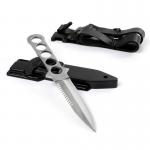
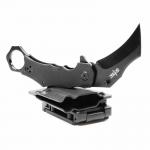
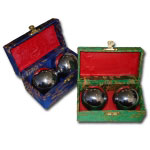
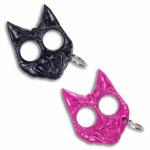


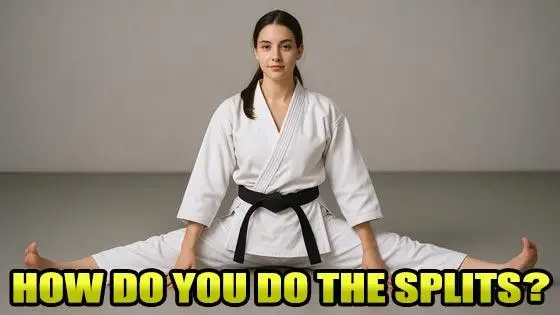

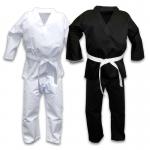

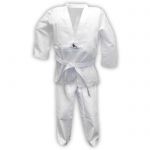
 (1)
(1)


















